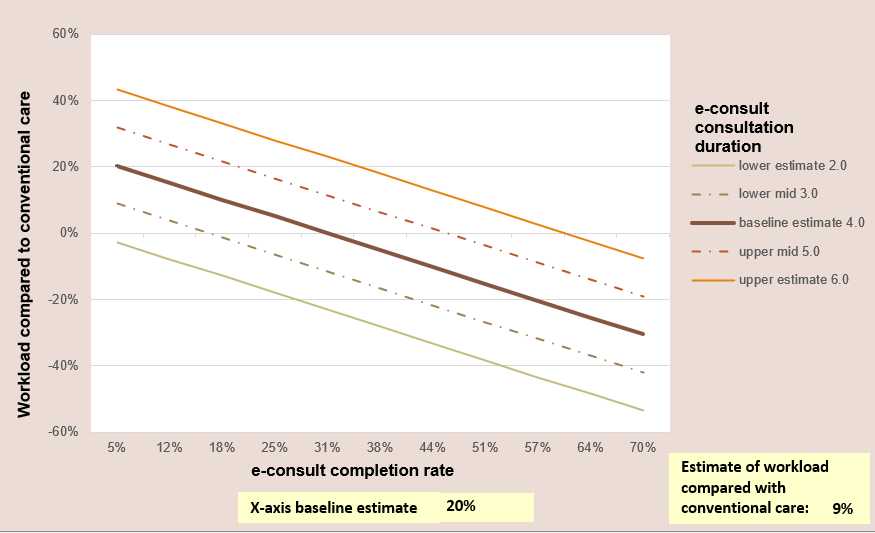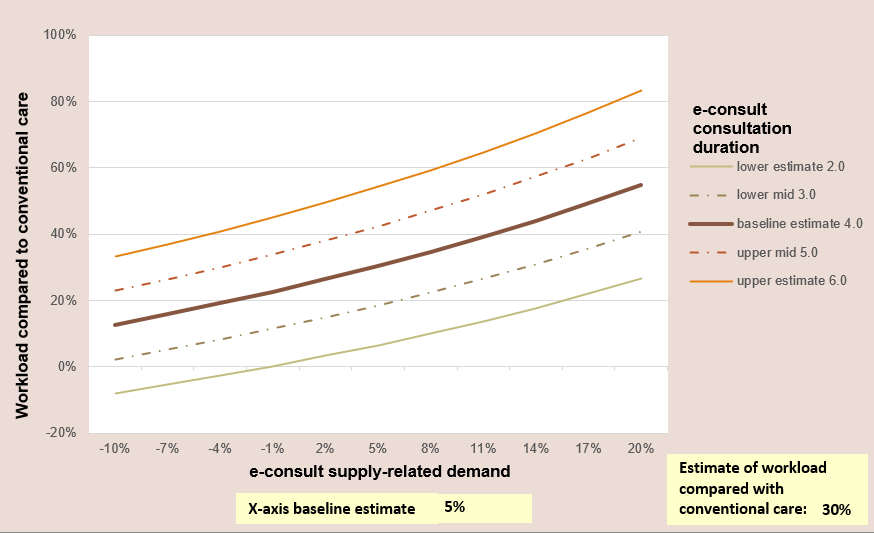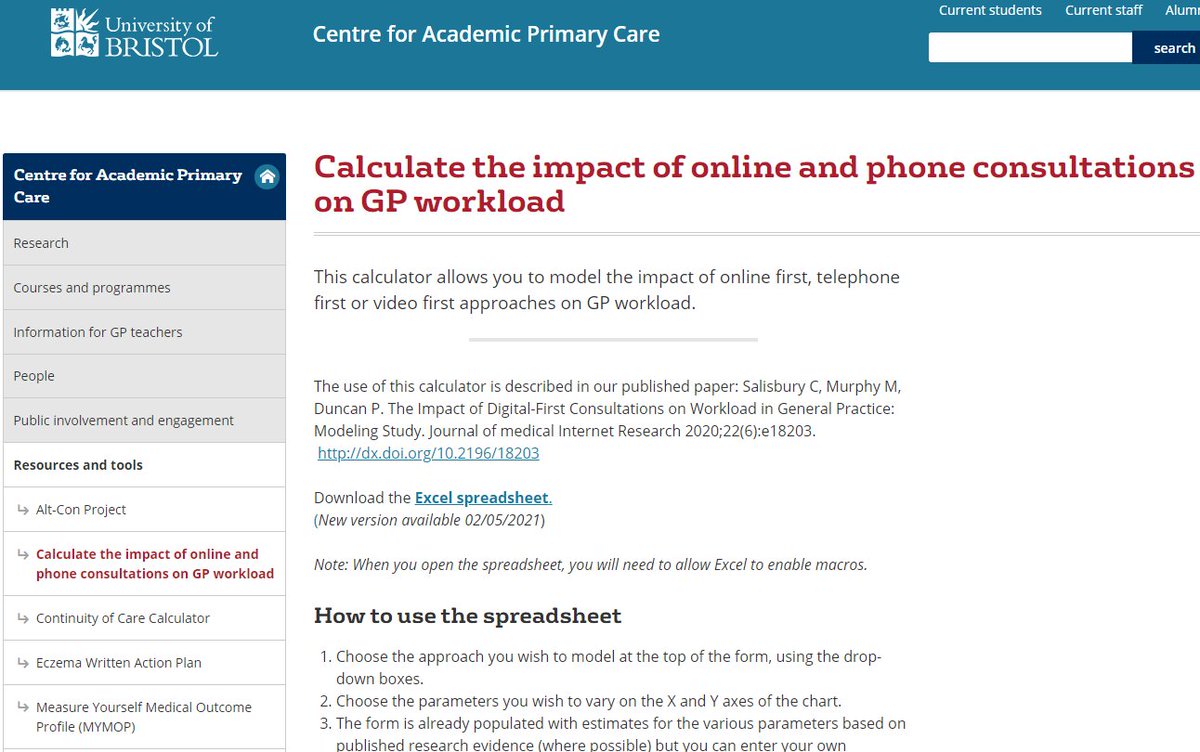In 2019 we wrote a modelling paper predicting that ‘digital first’ would increase GP workload. https://www.jmir.org/2020/6/e18203 ">https://www.jmir.org/2020/6/e1... By the time it was published, digital first was the norm, and our assumptions were out of date. We’ve updated our model. The results are interesting …. (thread)
If: 20% of GP e-consults are completed with a message. The rest get a phone call. 20% of those phoned need a face-to-face consultation. Under these assumptions there is a 9% INCREASE in workload compared with a conventional appointment system.
However, if you manage e-consults in just 3 minutes on average rather than 4, and only call in to the surgery 10% of the patients you phone, you could CUT your workload by 10%. Small differences make a big difference.
But e-consult allows access to patients that can’t get through under conventional appointment systems. If: 5% increase in consultation requests, e-consults take 4 minutes, 90% lead to a phone call, 30% of these lead to a face-to-face consultation = 30% INCREASE in workload.
Try it yourself, download the modelling spreadsheet here: #d.en.443758">http://www.bristol.ac.uk/primaryhealthcare/resources/wlc/ #d.en.443758">https://www.bristol.ac.uk/primaryhe...
Bottom line: Digital first consultations are more likely to increase than decrease GP workload. Triage is only efficient if the triage step is short and a high proportion of patients can be managed without a subsequent consultation.
NB: Some conventional appointment systems control GP workload by making access difficult for patients. Digital-first consulting might reveal previously unmet need. Just don’t expect it to cut GP workload.

 Read on Twitter
Read on Twitter




